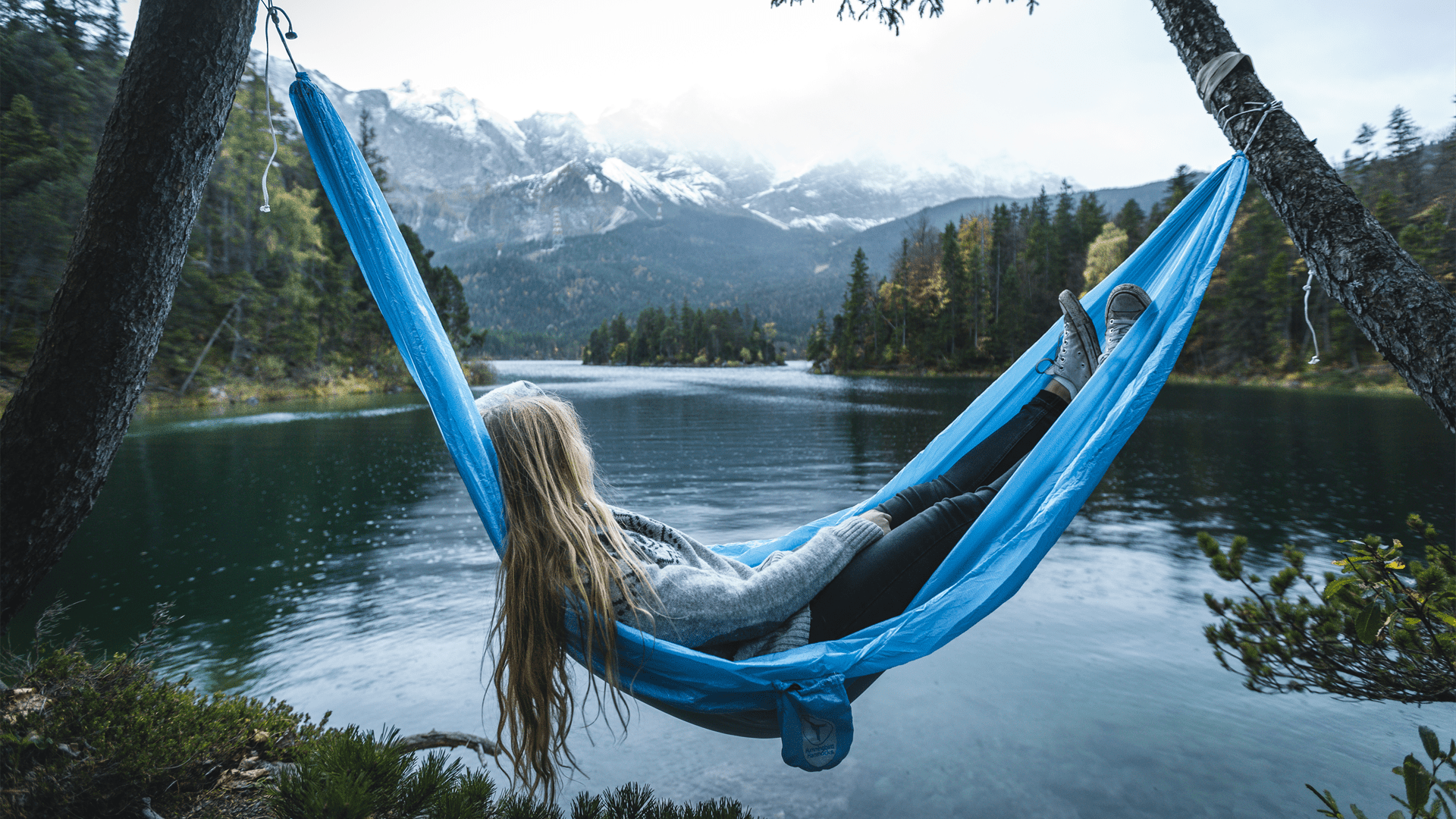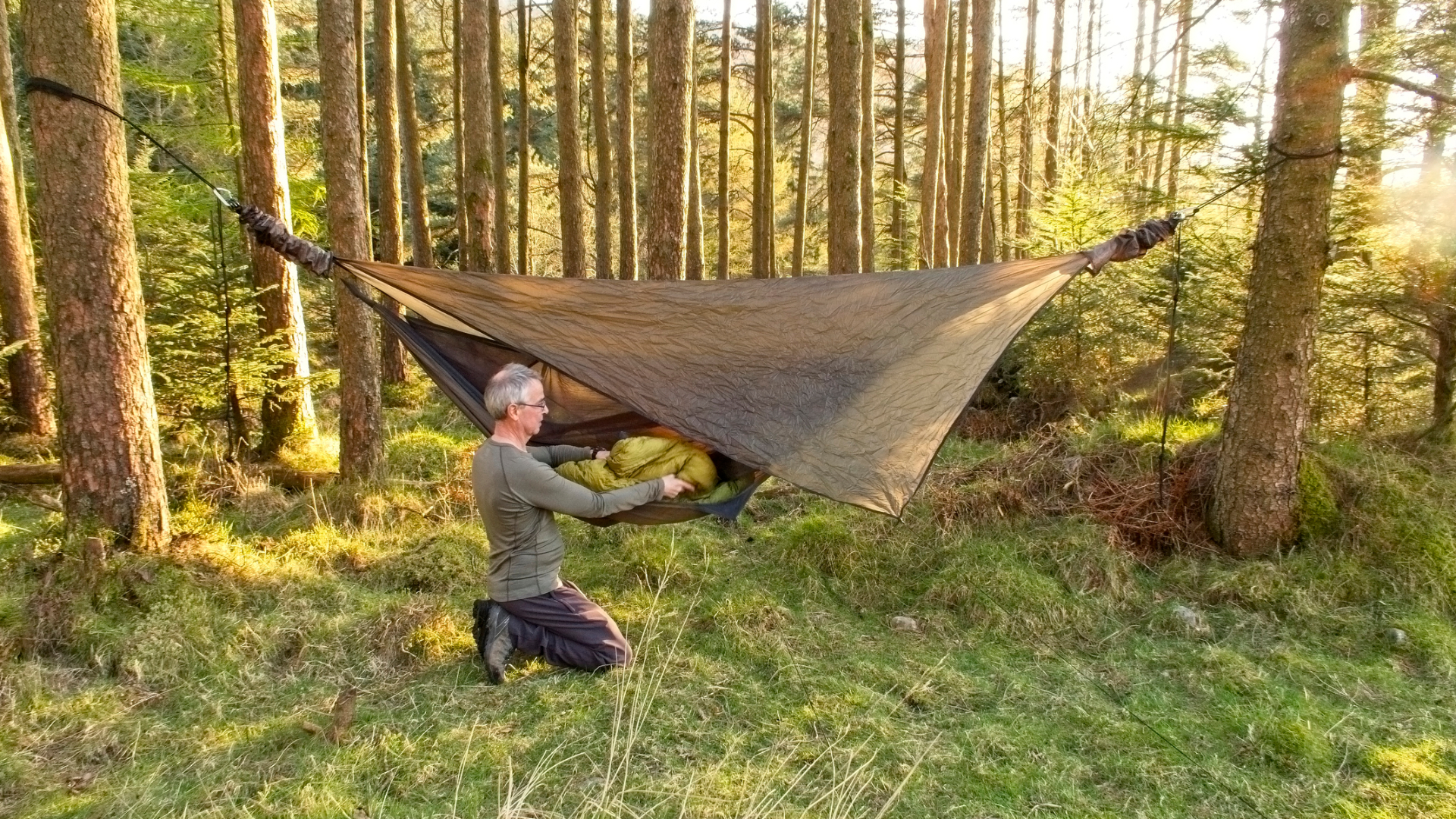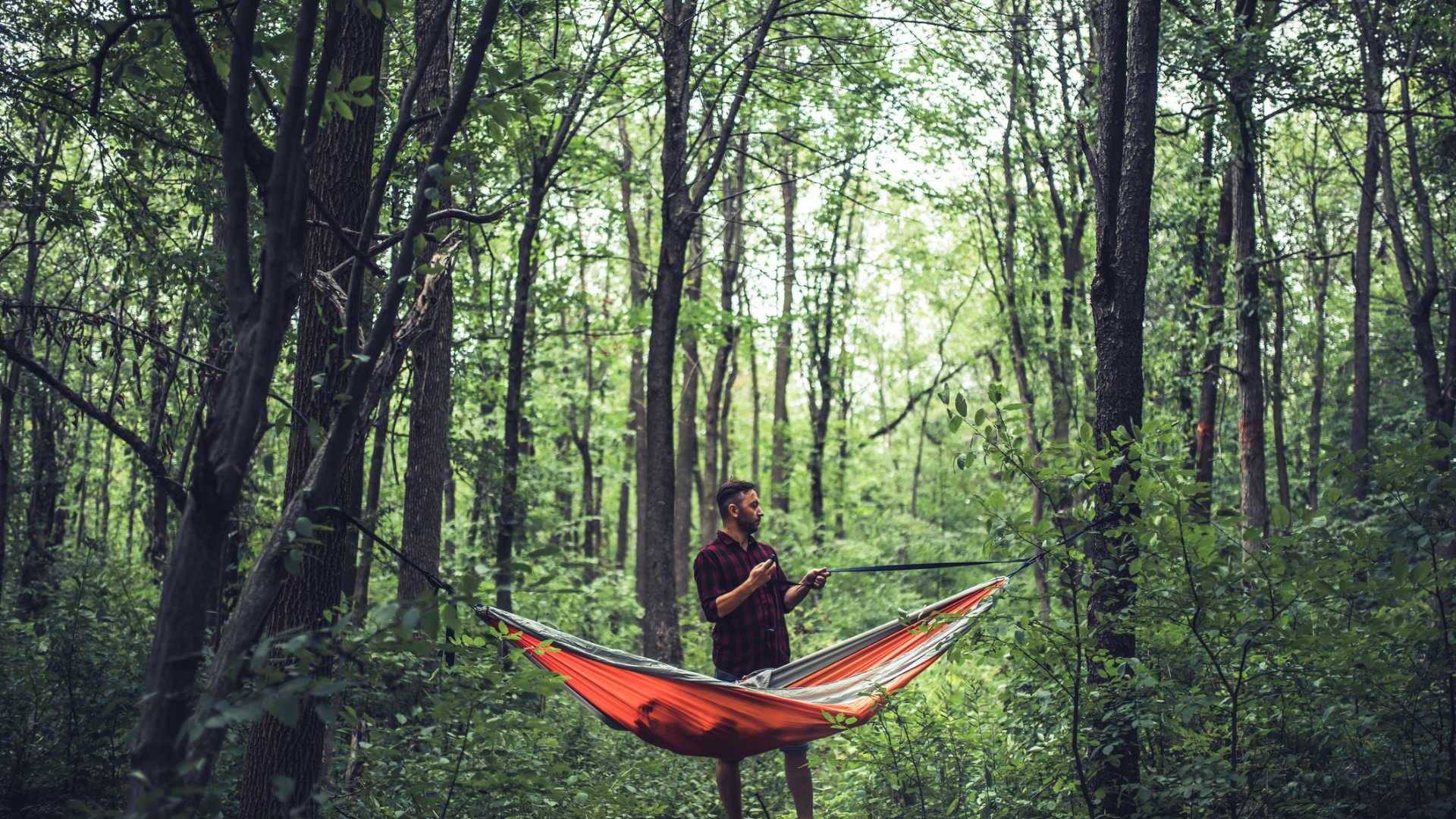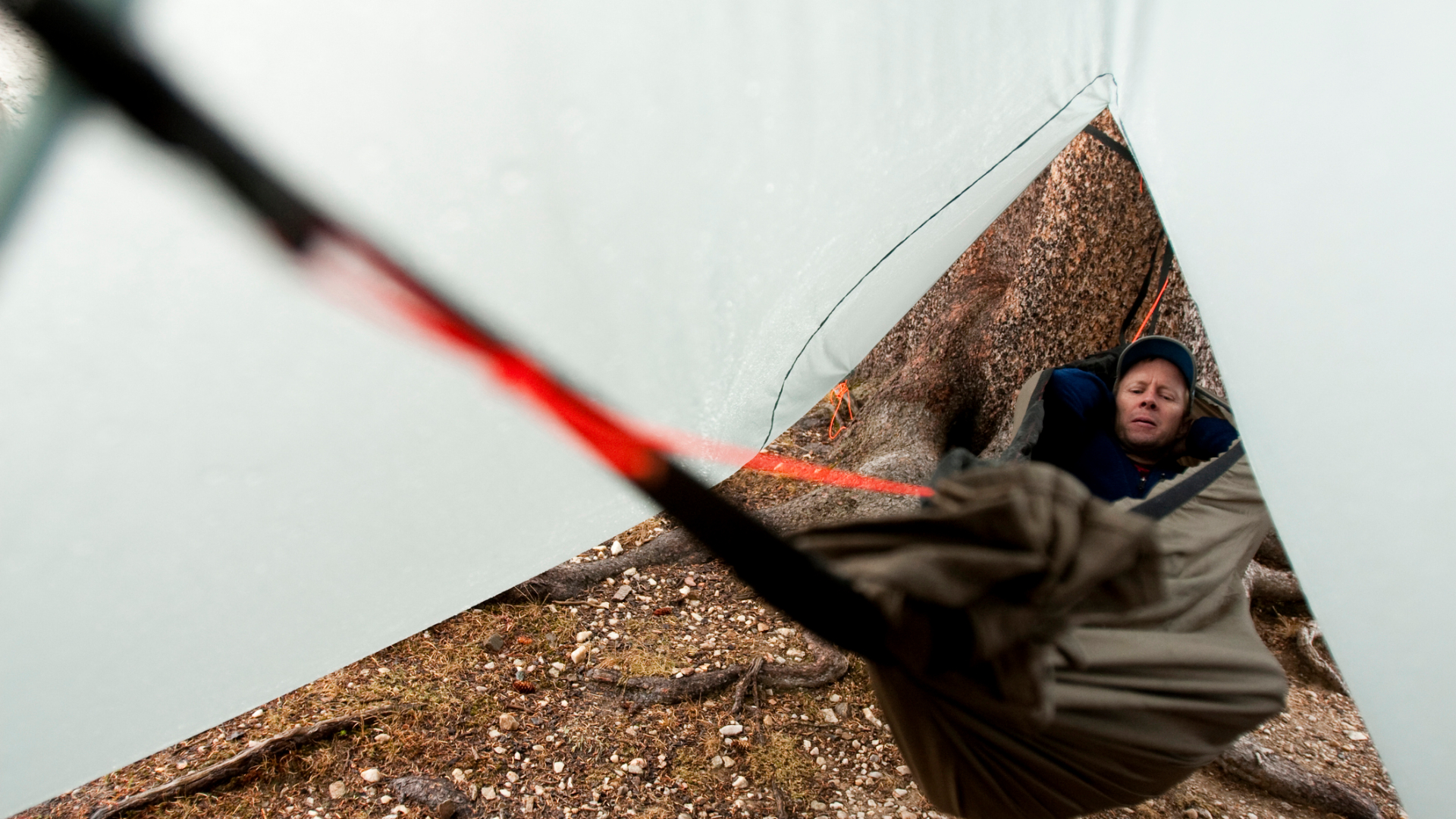How to use a hammock: hang out in the wild with hammock camping
Our guide to how to use a hammock helps you get into the swing of things on day hikes, car camping trips and backpacking adventures

Hammock camping certainly looks like a ton of fun, but it can also be a practical solution to camping in tough conditions. Sure, swinging next to a scenic lake is a great way to kick your feet up after a long hike, but hammock camping provides the best in versatility and comfort. The best hammocks are quick to deploy, low-impact and enable you to swing in a soft, dry nest above wet earth or deep snow, or on the kind of steep or broken ground where you won’t find enough flat space for your best tent or even a bivy sack. Before you can make the most of them, however, you really need to know how to use a hammock.
This expert guide will show you how to make the most of your hammock, whether you're seeking an afternoon snooze in the woods or looking for a lightweight approach to camping.

1. Practice first
Like basically any piece of camping gear, the last thing you want to do is to be trying to figure out how to use your hammock in the field. If you’re trying hammock camping for the first time, get to grips with the basics by putting up your hammock in ideal conditions. That means learning how to use a hammock in good weather, with plenty of time and daylight, and in a location – mature deciduous woodland is ideal – where you’ve got plenty of options when it comes to situating your bed for the night.
2. Scout your site

Like any camping experience, getting a good night’s sleep depends heavily on selecting the right location. For hammocking, start with these tips to scout the best location:
- Start by hunting for a location where other trees, undergrowth or contours give some shelter from the prevailing weather.
- Pick a two strong, healthy trees – roughly 20cm/8in in diameter, or more – with around five meters, or five big paces, of clear ground between them. (‘Roughly’ is as exact as you need with hammocks).
- Avoid or get rid of anything like rocks, fallen branches, brambles or undergrowth underneath your hammock because accidental tears in the hammock skin will make it useless, and you’ll also use the ground as your flat surface for doing camp chores and for storing kit.
- Look up. Are there any dead branches, overhanging trees or anything else that can fall on you? If so, find another spot.
- Make a final careful assessment of the two trees you’ve selected. Are they alive? A dead tree, however thick, is a potential faller. Are they strong enough?
- Assess which way the weather coming from, so you can shelter yourself from the prevailing wind or rain.

3. Hang the hammock
To hang your hammock, find the center point between the two trees. Lay the hammock out with the centre point of the hammock’s length on the center point between the two trees. Tie each rope or strap to its selected tree at roughly upper-chest height. Fix the foot-end rope slightly higher than the head end rope.
A common misconception is that a hammock needs to be graunched up as tight as possible to get it flat. But that’s not the way it works unless you want to spend the night bent like a banana, trussed up in a straitjacket. The hammock needs to hang down in a gentle loop, so that the midpoint of its length is roughly at knee height. This gives enough slack which when you lie down at a slight diagonal across its axis flattens the skin into a supportive cradle in which you can sleep luxuriously, on your back or your sides according to habit.
At first it’ll take trial and error to get close to this ideal; the midpoint of the hammock at the midpoint between the two trees, and the centre point of its curve at a comfortable sitting height. With some practice, though, you’ll get your eye in when it comes to distances, rope lengths and angles and you’ll be able to loop the hammock skin over your shoulder and do the tying up quickly and accurately, without the skin touching the ground, which is essential if it’s wet or muddy.
All the latest inspiration, tips and guides to help you plan your next Advnture!
4. Tie the knot
Some hammocks have innovative fixing and adjustment systems. The Alpkit Moro, for example, has tapes that loop around the trees, with carabiners at both ends of the skin that can be clipped along ladder-loops in the tapes for ease and speed in getting the distances and tensioning right.
If you’re using an old-school basic design, and will be tying off ropes or webbing, it’s crucial that you use one of the best camping knots so you're sure it won’t slip and lead to a rude awakening. Use a recommended knot that you know you can tie correctly each time, and that can be undone easily in the morning, even with cold or wet fingers.
Different hammockers, and different manufacturers, have different preferences and recommendations for knot tying, but a good system is to wrap each rope twice around the tree and then tie it back on itself with a quick-release bowline, with the loop of the quick release tied in a half hitch above the bowline for safety. Work it tight enough and under constant tension it won’t fail or even slip a bit, whilst the next day it only needs a tug to release it, so you can have the hammock undone, bundled up and in your pack in a few minutes. (www.animatedknots.com is a good go-to for knot lore and instructions).

5. Set up shelter
You might think hammock camping is for fair weather only, but stretch a tarp over your hammock and you’ll be protected from the worst of weathers. In fact, though you might think hammock camping is all about stargazing, most nights you’ll need a tarpaulin or fly sheet above your bed, and possibly a bug net as well.
There are numerous formats and ways of rigging up shelter to sleep under but with most hammocks, the easiest and usually the most effective way is to run a separate ridgeline between the same two trees and stretch a tarp (the bigger the better in poor weather) over it. Keep it asymmetrical with a larger area, taken lower, at the ‘back’ facing into the prevailing weather and a higher, less steep area to the front for ease of access.
Hooks and light shock-cord are a good solution to speedy set-up, taken from tie-off points on the tarp to surrounding bushes, branches, rocks or pegs. Learn to pitch this tarp ‘flysheet’ first, so in rain you can then put up the hammock and sort your kit under its shelter, keeping everything dry.

6. Get into your hammock
A key element of knowing how to use a hammock is getting into it. Getting into your hammock easily and safely is a knack; too much enthusiasm or faulty technique and it’s possible to flip over the far side, though once you’re actually in a hammock it’s hard enough to get out, let alone fall out.
The best way to get in is to stand with your back to the loop of fabric and reach back to hold the midpoints of both long sides, one in each hand. Pull the near side down behind your knees and the far side up behind your shoulders. Squat down and roll back into the fold behind you, and if you’ve got the hammock height right you’ll be supported in a sitting position with both feet on the ground. This is a pleasant way to spend an evening, reading, looking up into the trees and bending forward to use the ground beneath your feet as a ‘table’ for anything you need a flat surface for.
To lie down in the hammock, simply swing your feet up and towards one end and swivel your body round. Back when you were setting things up, you’ll have tied the foot end of the hammock slightly higher than the head end, to stop yourself sliding downwards when you move during the night. Positioning your hammock at low-sitting height has advantages when it comes to lying down; there’s a bit of room under the hammock for kit like boots, your best headlamp (which you can keep inside one boot), and being only eighteen inches/50cm or so above the ground, you can reach down for anything you need. You can get in and out again easily, and there’s rarely any reason to be higher.

7. Set up your sleep system
If you're planning on sleeping in your hammock, you'll also need to factor in a sleeping pad and sleeping bag, or alternative. In a hammock you lose most heat where your weight presses against its skin and when currents of cold air carry off your body warmth; insulation under your body is as critical as layers on top, and in really cold weather you can suspend a quilt under the hammock for added heat retention. Usually a lightweight air mattress or foam mat is enough insulation, and some hammocks are double skinned, making a pocket to slip your mat into so it shifts less under you during the night.
Sleeping bags are awkward to use in hammocks, though comfortable and warm once you’re lying down with the hood or neck done up. A full or three quarter length zip can help in arranging things, but the best technique is to stand on something waterproof beside the midpoint of the hammock and get into the sleeping bag and pull it up to chest height. Then reach back to sit down into the folds of cloth in the approved fashion, keeping the mat under you, before swivelling round to lie-full length. This is often the moment when you realise that you’ve left your boots or some other piece of kit out and you have to get up again, perhaps one of the reasons that many practised hammockers prefer to use camping quilts which are easier to adjust for comfort and coverage once you’re lying down.
With the right combination of equipment, skills and knowledge, the experienced hammock camper can set up their bed, and be sitting or lying back in comfort, within a few minutes, while looking down, literally, on those poor ground-sleeping campers. But remember, the hammocker who hasn’t learnt the optimum way of doing things is only one poorly tied knot away from becoming a cartoon punchline.
After a wild childhood in west Cork, Jasper Winn began embarking on long cycles, walks, horse journeys and kayak trips across five continents – adventures he’s decanted into books, magazine articles, radio and television documentaries. Keen on low-tech but good gear, Jasper is an advocate of slow adventures by paddle, pedal, saddle, boot and sail. He has circumnavigated Ireland by kayak and cycled across the Sahara. Twice. Having ridden north-to-south across Algeria he discovered the only way to get back was to turn round and pedal north again.

